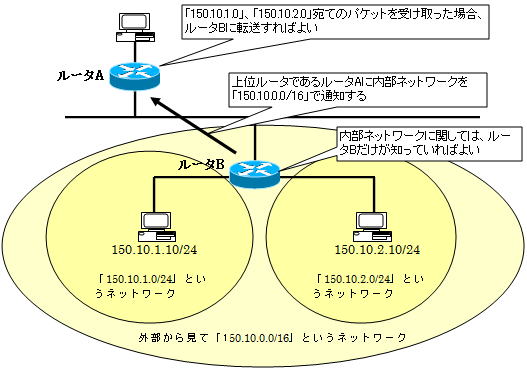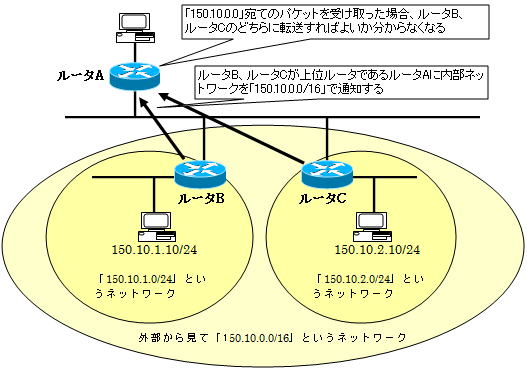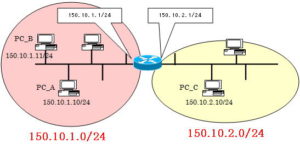route summarization (route summarization)
route summarization (route summarization)
There are two methods of assigning IP addresses: classful addressing and classless addressing. Classless addressing is now mainstream.
Subnet masks allow you to divide your network into subnets and perform route summarization.
*When performing route aggregation, it is necessary to use a static route or a routing protocol that supports classless routing.
I explained that subnetting makes the network more efficient and easier to operate because it allows you to properly size and operate the network.
However, there is also a drawback that the number of entries in the routing table handled by the router increases as the number of subnets increases. Considering the vast network of the Internet, it is easy to imagine that the number of entries that routers must handle will be enormous.
As the number of network entries increases, the load on routers also increases. In some cases, routing may not be processed in time.
*A routing table is a table that a router refers to when forwarding received packets. The correspondence between the destination network and the forwarding source interface or the IP address of the neighboring router’s interface is described.
See network configuration below.

The network “150.10.0.0/16” connected to Router B is divided into subnets “150.10.1.0/24” and “150.10.2.0/24”.
What if Router B reports routes “150.10.1.0/24” and “150.10.2.0/24” to Router A without summarizing routes? It’s going to be. If this were done at the Internet level, the size of the router’s routing table would be enormous.
What if Router B reports a route with “150.10.0.0/16” to its superior router, Router A?
Router A’s routing table size is reduced. If this were done at the Internet level, the size of the router’s routing table would be considerably smaller.
As for the routing of “150.10.1.0/24”, “150.10.2.0/24”, Router B only needs to do it. Other routers don’t need to know the routes “150.10.1.0/24” and “150.10.2.0/24”.
In this way, for a divided network, the number of entries in the routing table handled by the router can be reduced by entrusting it to the nearest router.
Discontinuous subnet problem
He explained that route aggregation reduces the amount of route information handled by routers, reduces the size of routing tables, and enables efficient routing.
But look at the network configuration in the diagram below.

Router B is reporting subnet “150.10.1.0/24” to Router A with “150.10.0.0/16”.
Router C is reporting subnet “150.10.2.0/24” to Router A on “150.10.0.0/16”.
As a result, when router A receives a packet destined for the “150.10.0.0” network, it does not know whether to forward it to router B or router C.
Why did it stop working?
The reason why routing stopped working is that Router B and Router C reported route information for “150.10.0.0/16”.
This means that the same network address exists multiple times. It violates the one IP address principle. As a result, Router A could no longer decide which way to send the packet.
When subdividing in this way, routing can get messy.
If you use a routing protocol to do the routing, it may work fine in networks with subnets, but the routing protocol itself may automatically summarize routes and report incorrect routes.
In that case, turn off the automatic summarization function in the routing protocol settings or manually set the route to be reported to avoid this problem.


